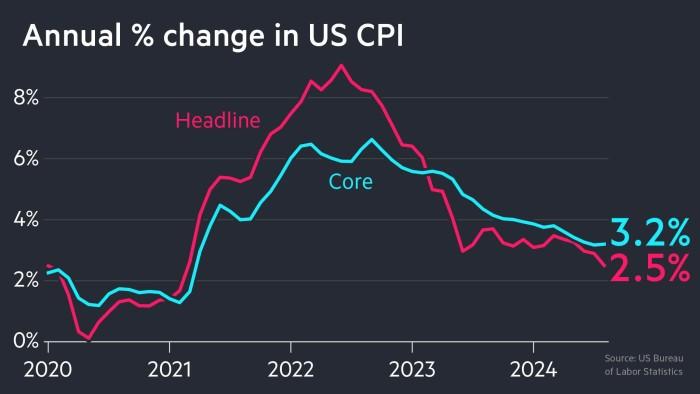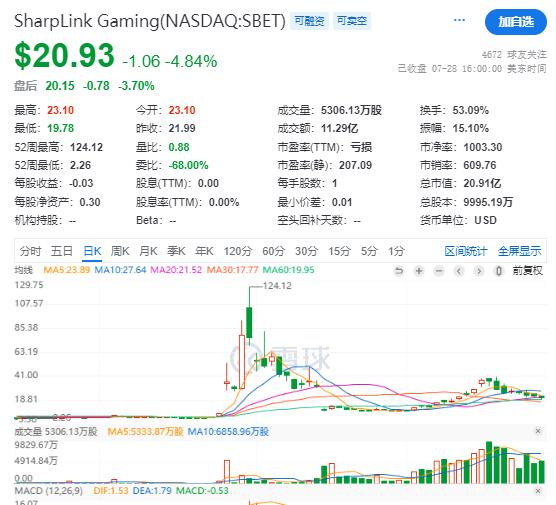Author: Mask
A smokeless monetary war is quietly unfolding on the blockchain.
When coffee farmers in Kenya receive USDT payments from German buyers via mobile phone, when Argentine residents use dollar stablecoins to replace their plummeting local currency savings, when Hong Kong citizens exchange digital Hong Kong dollar stablecoins on compliant exchanges.Meanwhile, at a shopping mall in Beijing's Xidan, Ms. Li used the digital yuan's "tap-to-pay" offline function to purchase breakfast, with no network required and funds secured by national credit.——These scenarios reflect a profound transformation of the global monetary system, with stablecoins and central bank digital currencies representing the two core forms of digital currency, fundamentally reshaping the financial infrastructure.

These two seemingly similar digital payment tools represent two paths of global monetary system transformation:stablecoins led by private institutions and central bank digital currencies (CBDC) issued by sovereign states, which are converging in technical form but fundamentally divergent in issuance logic and financial essence.
On August 1, 2025, Hong Kong's Stablecoin Regulation will officially take effect, marking a significant milestone in global stablecoin regulation. Simultaneously, People's Bank of China Governor Pan Gongsheng publicly affirmed the technical value of stablecoins at the Lujiazui Forum, noting that they "fundamentally reshape the traditional payment system" from the ground up.This policy shift signals the entry of digital currency development into a new stage.
I. Dual-Track Evolution of Monetary Digitization
To understand the current monetary landscape transformation, one must first clarify the essential differences between these two core digital currency forms.Stablecoins and central bank digital currencies represent entirely different monetary philosophies and development paths.
Stablecoins are cryptocurrencies with relatively stable prices,typically issued by private institutions and pegged to fiat currencies or other stable assets. They emerged in 2014 when Bitfinex's Tether company issued USDT, pegged 1:1 to the US dollar,with the initial intention of providing a "safe haven" for the highly volatile cryptocurrency market.
Technically,stablecoins enable point-to-point transactions via blockchain technology, achieving instant transfers through electronic wallets and avoiding traditional banking system's complex settlement processes,with the global stablecoin market now exceeding $250 billion, with USDT and USDC dominating over 90% of the market share.

Central bank digital currencies (CBDC) represent a digital extension of national sovereignty, including China's digital yuan (e-CNY), the Bahamian "Sand Dollar", and Sweden's e-krona.Unlike stablecoins, CBDCs are 100% backed by national credit, essentially the digital form of M0 (cash in circulation), where each unit of digital currency corresponds to an equivalent central bank liability on the balance sheet, with no default risk.
Central bank digital currencies emerged for three reasons: improving payment system efficiency, strengthening monetary policy transmission mechanisms, and most importantly—maintaining national financial sovereignty, as central banks must consolidate currency issuance rights through technological means in the context of cryptocurrency and private stablecoin emergence.
II. Technical Commonality and Functional Divergence
Despite fundamental differences in issuance entities and value logic, stablecoins and central bank digital currencies share a surprising technological architecture.
Both are fundamentally based on blockchain or distributed ledger technology.Stablecoins are primarily issued on public chains, ensuring decentralization and anonymity; CBDCs typically use consortium chain architectures to balance efficiency and security within a controllable range. Taking the digital yuan as an example, its "dual-layer operational system" has the central bank responsible for issuance and commercial banks for circulation,maintaining centralized management while leveraging distributed ledger efficiency.
Their value stabilization mechanisms differ significantly.Stablecoins rely on full reserve assets (like US dollars, US Treasury bonds) and instant arbitrage mechanisms to maintain price stability. Compliant stablecoins like USDC maintain 102%-105% over-reserves and ensure transparency through independent audits. However, regulation remains incomplete, with varying requirements across jurisdictions. While USDC proactively publishes audit reports, Tether (USDT) has long been questioned for insufficient reserve transparency.
When market prices deviate from the pegged value, authorized participants can arbitrage through minting/burning mechanisms, controlling fluctuations within ±0.3%.
Central bank digital currencies directly inherit national credit backing, with value stability equivalent to physical cash.On the People's Bank of China's balance sheet, each digital yuan corresponds to an equivalent central bank liability, possessing unlimited legal tender capacity, fundamentally avoiding price volatility risks.Designed from the outset under comprehensive central bank supervision, strictly adhering to anti-money laundering and monetary policy regulations, with controllable anonymity (privacy protection for small transactions, traceability for large transactions).

In application scenarios, they have naturally divided their roles:
Stablecoins:Primarily operating on public chains like Ethereum, relying on network consensus mechanisms. Facing risks of de-pegging (like UST algorithmic stablecoin collapse), reserve asset risks, and smart contract vulnerabilities.
Leveraging cross-border payment advantages as a "universal transaction medium".Annual on-chain settlement totals over $25 trillion, equivalent to Visa and Mastercard's combined transactions. Comprising over 90% of DeFi lending, preferred settlement tool for NFT and RWA transactions,connecting traditional assets with the blockchain ecosystem.
Central bank digital currencies:Adopting hybrid architectures (like digital yuan's "central bank-commercial bank" dual-layer operation), supporting offline dual payments,with core risks shifting to privacy protection and financial sovereignty, such as potential commercial bank disintermediation.
Focusing on domestic retail payment scenarios to achieve payment inclusivity under sovereign control(like digital yuan covering utility bill payments in 28 Chinese cities),primarily applied to domestic high-frequency scenarios like civil consumption and government services, with the core goal of enhancing financial inclusivity and monetary policy transmission efficiency,enabling precise fiscal subsidies and targeted liquidity adjustment.
III. Competition and Symbiosis: The Core Battlefield of the New Monetary War
The current global monetary system is undergoing profound restructuring, with stablecoins and central bank digital currencies forming a complex relationship of competition and complementarity.The essence of this "new monetary war" is fundamentally a dual contest of monetary dominance and technological routes.
1. Digital Extension of Dollar Hegemony
US dollar stablecoins have become a new tool to consolidate dollar hegemony. 95% of global stablecoins are US dollar stablecoins, far exceeding the 50% share of the US dollar in global payments. These stablecoins invest 80% of their reserve funds in US Treasury bonds, making them one of the top 20 holders of US debt.
The GENIUS Act passed in June 2025 further requires: Stablecoins issued in the US must be 100% backed by US dollars or ultra-short-term Treasury bonds maturing within 93 days. This policy cleverly transforms stablecoins into a "digital dollar" carrier, both compensating for the reduction of US debt holdings by non-US sovereign institutions and strengthening the dollar's status through the global circulation of stablecoins.
US Treasury Secretary Scott Besent stated bluntly: "US dollar stablecoins not only expand the use of the dollar but will also support the continued demand for US Treasury bonds."

2. Overtaking in the Internationalization of the Renminbi
Facing the aggressive expansion of US dollar stablecoins, China has adopted a "dual-track" strategy: On one hand, deepening the digital renminbi pilot domestically; on the other hand, actively laying out offshore renminbi stablecoins in Hong Kong, exploring new paths for renminbi internationalization.
The Hong Kong Stablecoin Ordinance will take effect on August 1, 2025, requiring stablecoins to have a locally registered issuer, and offshore HKD stablecoins must apply for a license from the Hong Kong Monetary Authority. This institutional design creates a compliant development space for offshore renminbi stablecoins, and the Shanghai-Hong Kong joint action plan more clearly proposes to build a "global RMB asset allocation center", strengthening digital financial cooperation.
The strategic value of developing offshore renminbi stablecoins lies in bypassing SWIFT system constraints while avoiding direct impact on mainland monetary policy and capital controls.According to IMF data, the US dollar's share in global official reserves dropped to a historical low of 57.8% in the fourth quarter of 2024, providing a window of opportunity for renminbi internationalization.
3. Inclusive Finance and Sovereign Challenges
In emerging markets, stablecoins and central bank digital currencies present a more complex interactive relationship. For residents of high-inflation countries like Argentina and Turkey, US dollar stablecoins have become "digital dollar deposits" with a penetration rate exceeding 30%, effectively helping people avoid local currency depreciation risks.
However, this "spontaneous dollarization" also brings concerns about weakened monetary sovereignty. When residents and enterprises of a country can obtain US dollar stablecoins without a US bank account, the central bank's monetary policy transmission efficiency will be significantly reduced, and capital outflow control will become more difficult. The Bank for International Settlements warns that stablecoins may become a new variable in global financial stability.
(The translation continues in the same manner for the rest of the text.)Hong Kong, serving as an offshore RMB stablecoin testing ground, and Shanghai, as a pioneer of digital RMB, are jointly exploring a development path that both safeguards financial sovereignty and embraces technological innovation, when transaction settlements on the blockchain are shortened from days to seconds, and cross-border payment costs drop from 6.35% to near zero, the essence of financial services is being redefined.
For ordinary users, the key is to rationally choose based on scenario needs: prioritize CBDC for daily consumption and small payments to ensure safety; for cross-border trade or on-chain investments, choose regulated and audited stablecoins, but always pay attention to the issuer's reserve transparency, after all, in the digital currency era, understanding "whose promise the money is" is more important than caring about "which wallet the money is in".
The new monetary war has no gunpowder, but will profoundly change everyone's wallet and the world economic landscape.The only thing that can be confirmed is that the wave of monetary digitization will not turn back, and understanding the symbiotic evolution of stablecoins and central bank digital currencies will become the key code to grasping future wealth flow.







